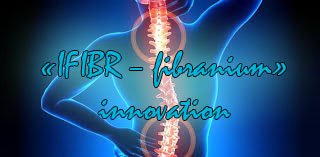CONCEPTUAL SUBSTANTIATION OF PRIORITY CRITERIA OF QUALITY OF LIFE AND HEALTH IN ASSESSING THE EFFECTIVENESS OF HEALTH CARE , SOCIAL AND ENVIRONMENTAL PROGRAMS

Professor Luchkevich V.S., Russia, Saint-Petersbourg
International University of Fundamental Science
International Academy of Ecology and Human and Natural Security
North-Western Public Medical I. I. Mechnikov University
Dear members of the Bureau and members of the international congress !
Ladies and Gentlemen!
Human wisdom suggests: to assess the happy life it is important to consider not only how many years a person has lived, but, most importantly, how many years have made in this life years with good quality of life (screen. 2).
I give this picture not to remind the audience about the historical significance and architectural merits of St. Petersburg (where we are always happy to meet you). Drawbridges are a symbol of that factors of health and disease risk existing in the world civilization, problems of ecological safety and unmet subsistence needs –they are on one side, and measures of active preventive health conservation, increase in life expectancy and optimal living conditions – are on another shore. A connecting bridge, ensuring the unity and the ability to implement socially -oriented state policy priority of health and ideological activities, protection of the rights and well-being, is to optimize the quality of life of the population as the main criterion for the effectiveness of social and environmental programs.
I , as a public health and health professional, am particularly pleased to present here at the European headquarters of the United Nations Organization (UNO Headquarters), an example of use of the main criteria for health -related quality of life – HRQOL.
We believe that the methodological basis for the prevention included in the Concept of health- medicine and quality of life , as one of the leading methods for assessing their effectiveness, needs to be updated with the definition of health indicators that can be measured, establishing reference standards , determining the risk groups. (Screen 3).
A person has a right for health, a right for a healthy environment, a right for affordable and quality healthcare. Therefore, health should not be seen as a result, but as a basis for the development of health state policy.
However, even the definition of the World Health Organization (even in 1948): «Health is the complete physical, mental and social well-being and not merely the absence of disease», does not contain the active preventive directive and there is no methodological basis for a complete understanding of the quality of life , so we propose to add that «Health is a condition that allows the optimal interaction with the environment, quality of life and the safe implementation of the basic kinds of life, with full physical, psychological and social functioning of human». Integrative and systemic approach to assessing the health and quality of life suggests that the body is a functioning biological system in time. Therefore , health promotion and improved quality of life are the functional concepts and it is necessary to assess their dynamics and stages of life. It should be taken into account that the body’s ability to adapt is a measure of independence from the device and changing conditions of internal and external environment . Only on this basis can be developed the concept of Health promotion, as a health- medicine and the concept of a healthy lifestyle.
Changing the biomedical model of health and illness and biopsychosocial model of health has led to the need to consider the subjective opinion of the person about his well-being and health. He introduced concept does not oppose health-active prevention of high-quality curative medicine. The unifying integrative criterion for health prevention and for treatment and rehabilitation programs is a criterion of the quality of life, testifying to the subjective evaluation of a man of his status as a consumer of health services. The study of quality of life is generally accepted in international practice , a highly sensitive and cost-effective method of assessment of the relative health . The concept , based on the principles of this methodology allows the most important principle of the treatment process : not to treat the disease , but the patient , to take into account the peculiarities of his way of life.
According to the WHO definition of “Quality of life is the perception of individuals of their position in life in the context of the values of the environment in which they live , in close connection with their goals , expectations , standards and concerns ” (Screen. 4). The most often the following meaning is given to the quality of life in Russia: “Quality of Life is an integral characteristic of the physical, psychological, emotional and social functioning of a person based on his subjective perception.” However, the existing quality of life characteristics do not sufficiently reflect the interests and human rights as a consumer of health services, taking into account the peculiarities of its social and hygienic operation and its lifestyle in certain socio-economic conditions and the environment that has an impact on his health in the amount of more than 75.0%.
Therefore, from our point of view, we have ntroduced the concept of “quality of life related to health that is an integral , subjective satisfaction characteristic of life conditions , habitat and adaptive abilities of the body , providing physical, psychological and social well-being ” (Screen. 5).
Up to nowerdays there are various criteria for measuring quality of life. UN experts have developed a generalized structure of the components of quality of life , including health, education, social security , rights and the human condition (Screen. 6). HDI ( Human Development Index ) was developed as an ” expansion of human capabilities for a long and healthy life.” WHO coined the medical practice standardized index (QOL-Index). It reflects the quality of life in the aspects such as: overall physical activity , psychological condition , the patient’s independence in daily life , health , the availability of support from other people , the possibility of restoring full life . A composite index is the “quality of life index .” So far , despite the international practice , the problem of the quality of life study remains underestimated.
Possible indicators of quality of life as a criterion for the effectiveness of therapeutic interventions were limited in clinical trials . The main problem is the lack of common technical approaches , not to compare the scientific and practical studies in different countries and regions .
We (Screen. 7) have developed and tested a universal multidimensional questionnaire study of quality of life as an integrated criterion of health assessments and the effectiveness of medical and preventive, treatment and rehabilitation, and environmental programs. 15 kinds of scales on the functioning of the signs and symptoms gradations are presented in the structure of the proposed questionnaire to produce quantitative and qualitative indicators. The model scales and the total number of measurements of features were developed for the assessment of quality of life. The study determined the level of informative significance scales by type of operation and group features. The method of calculation and evaluation of the outcomes of quality of life and health allows to modify presented in the questionnaire scale and gradation attributes given the specificity of the studied contingent (children, working-age population, the elderly, people with disabilities, migrants and others) and the clinical condition of the patient (including prenosological states specific symptoms, painful manifestations characteristic for different nosologic forms of diseases). In this case both general and specific marker of the formation of pathology in the early stages may serve as indicators of structural and functional changes in various systems of the body that can be measured and assessed in dynamics. Subjective data ( in the Quality of Life Research ) in addition to objective indicators to assess the dynamics of clinical and functional conditions ( changes) is based on screening and diagnostic programs. Therefore, it is advisable to develop individual programs of medical prophylactic and therapeutic effects of rehabilitation to improve the quality of life of patients .
We have developed a special research program “Quality of life as a criterion for assessing the health and effectiveness of health care systems to ensure ecological, sanitary and epidemiological safety.” The results of the study among urban residents of St. Petersburg (Screen. 8) made possible to determine the priority of life indicators and characteristics of quality of life ( social and hygienic operation , the socio – economic well-being , the level of hygiene and environmental well-being of the community ) .we have Identified 3 risk groups of urban residents on the basic health and social and hygienic characteristics of life ( the optimal conditions , the relative and absolute risk).
According to the generalized indicator of socio-hygienic operation (Screen. 9) urban residents can be attributed to the relative risk (73 points). In this set, taking into account the type of family only 44% of urban households can be attributed to the healthy, and 56% of residents are in different groups of risk. These single-parent families, divorced, single, and others. up to 12% of workers speak about the impact of adverse factors of work, and for 7% of the work performed does not correspond to a state of health. The proportion of completely satisfied with living conditions of the total number surveyed for economic and household activities (Group optimal conditions) is only 24%. More than half of residents (69%) are satisfied with the regime and not enough food quality (risk group).According to their subjective estimations, women are more demanding in the assessment of the socio – hygienic operation and although they have objectively more favorable characteristics of quality of life that according to their subjective indicators, they evaluate worse.There is a high proportion ( 82 % ) of persons who wish to improve their socio – economic status ( overall quality of life – 67 points , the relative risk ) . With women, these figures are much worse. Important informative measure of quality of life is social and psychological well-being in the workplace and at home ( 72 points) , and 27 % of residents have noted the need for psychological correction . This recreational activity in order to restore physical strength and to promote health is carried out regularly or occasionally only by 66 % of urban residents .
On the basis of preclinical subjective diagnosis and screening questionnaire we assessed the presence and dynamics of changes in the severity of symptoms and early clinical manifestations that characterize the quality, timeliness and effectiveness of preventive and therapeutic measures. The results indicate the presence of symptoms and expressed prenosological states in such nosologic forms of diseases such as diseases of the musculoskeletal system (56%), digestive system (57%), circulatory system (40%), and others.
In the transition from a healthy state to disease, the quality of life is deteriorating mainly due to the physical component (symptoms, pain, feeling of general health). Overall health is most negatively evaluated in the presence of concomitant chronic diseases. General health indicators are related to the degree of exposure to the life factors such as: satisfaction with living conditions; the type and conditions of employment; quality of food; the level of health awareness and prevention activities. On a scale of subjective health assessments all urban residents evaluate on average about 70%.
The migrants (mostly younger ) have very unfavorable indicators of the quality of life in almost all the characteristics of social and hygienic operation ( group relative and absolute risk ) , socio-economic ( absolute risk ) , social and psychological state (up 30.0 % absolute risk group ) , the level of medical awareness , preventive and medical- social activity ( to 36.3 % – an absolute risk group) .
Women are at risk to a greater extent than men , on grounds such as : type of family , family environment , socio – economic status , the quality of food , conditions and nature of the professional activity .
More important ranking places are occupied by socio-economic, psychological and hygienic problem indicators in the formation of the quality of life related to health. Total index of quality of life was 65 points, with a strong correlation found between indicators of social and hygienic operation, socio-economic status, physical functioning and health. Evidence suggests that a group of healthy urban population is 30%, relative risk group is 54%, and the absolute risk group (with various forms of chronic diseases) is 16%. However, the analysis of additional data on the presence of the expressed prenosological conditions , signs and symptoms indicates the projected increase in the absolute risk especially in diseases of the circulatory system , respiratory diseases and diseases of the musculoskeletal system .
Successfully , reliably and objectively is used the complex method of evaluating the quality of life in the evaluation of the effectiveness of treatment and rehabilitation (Screen. 10) with the analysis of the dynamics of species in the functioning of the rehabilitation stage in forecasting distant treatment results in the post-hospital stage (Screen. 11).
The results of the analysis of quality of life with personalized state monitoring methods ( Screen 12) allow to optimize and correct some types of life , management of employment (especially for people with disabilities or at risk ) .
Studies suggest that the process of studying and optimizing the quality of life necessitates the use of a process approach (Screen. 13) with the definition of the governing bodies, the presence of regulatory support, the definition of objects, identification of life risk factors, habitat forming diseases, clinical and functional states, identifying rank the importance of risk factors and optimizing the role of participants in the process of correction of living conditions and quality of life.
Thus, the proposed conceptual model (Screen. 14 ) allows not only to assess the effectiveness of implementation of social , health, environmental programs and support systems , but can also be used for monitoring of clinical and functional conditions of different population groups ( patients and healthy ) , in the extreme situations ( natural and manmade ) , during the examination of new methods of treatment and prevention , in the economic rationale for regional projects (Screen. 15).



